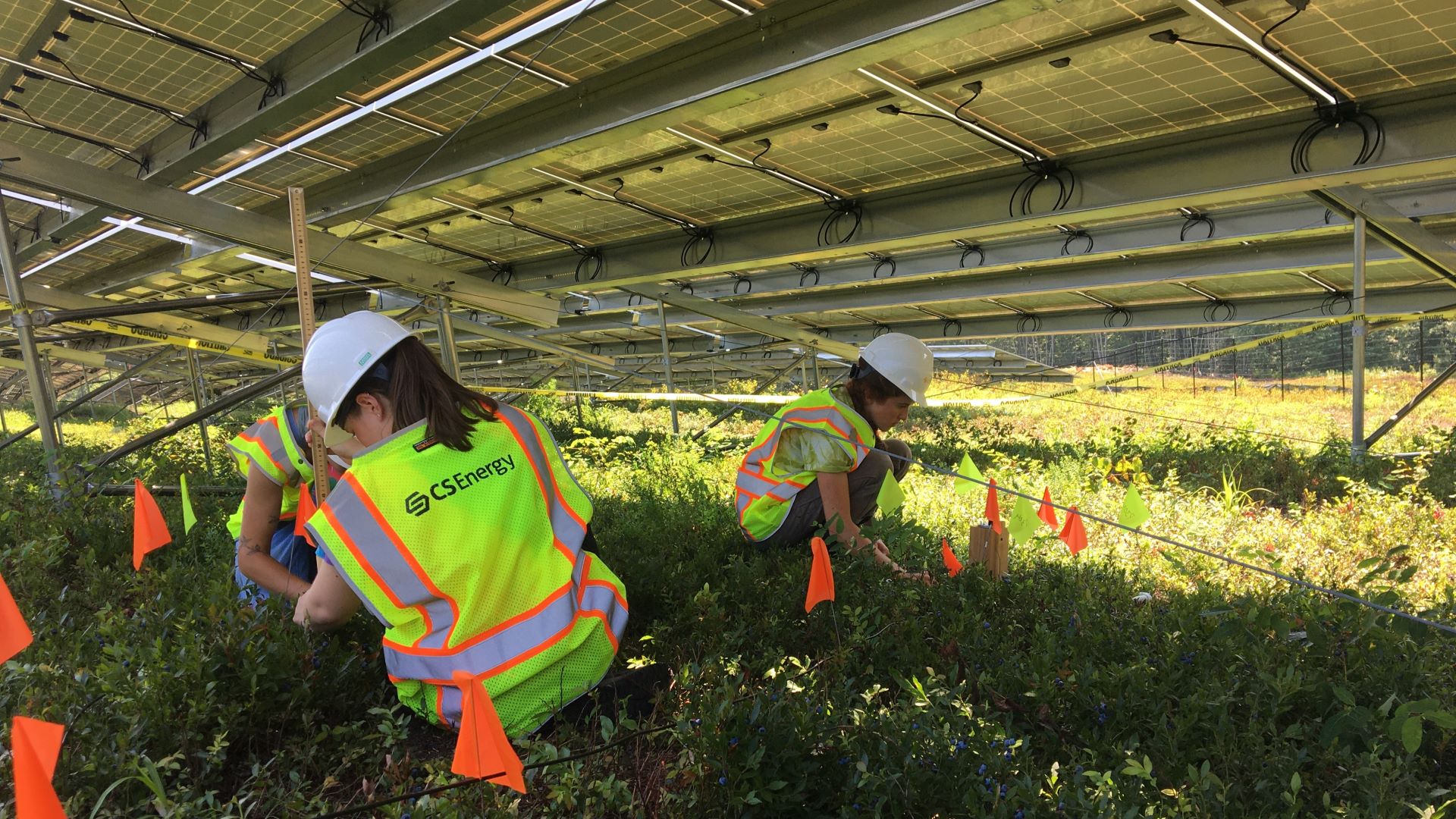Shade from the solar panels is significantly reducing blueberry yield. Bushes planted in shaded portions underneath solar panels produced just 9 percent of the blueberries compared to bushes planted in rows between panels.
Wild blueberries “can handle some shade, because when they’re grown in the woods they are shaded and they still grow,” Calderwood said. But when sunlight levels dip too low, blueberries put more energy into producing leaves rather than fruit, so they can catch what little light may filter through to the understory.
Bushes with more leaves require more pruning, Calderwood said, noting that the shaded areas also saw lots of weeds and a high incidence of disease.
A principal aim of the study was to determine what impact installing the solar panels had on the blueberry plants. To measure this, researchers worked with BlueWave to designate three areas with varying levels of construction precautions.
In the “standard” area, no precautions were taken; in the “mindful” area, construction and foot traffic were limited, and equipment could only rotate 90 degrees; in the “careful” area, protective coverings were placed over the blueberry plants, with even more limits on equipment rotation and foot traffic.
“We didn’t see any statistical difference between those treatments, meaning that the blueberry recovered well,” Calderwood said.
BlueWave is already using the Rockport results to guide a blueberry project in Massachusetts. The company plans to introduce wider rows and build solar panels on an axis that allows them to pivot and track the sun throughout the day, letting in more light for plants.
Robertson-DuBois said building a solar farm suited for agriculture is more expensive than other solar projects: It requires more cable to space the modules farther apart and taller mounts to give farmers room.
